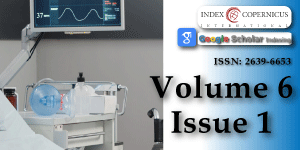Case report: Perioperative management of a patient with familial dysautonomia
Main Article Content
Abstract
Familial dysautonomia is a rare autosomal recessive neurodegenerative disease affecting cells of the autonomic nervous system. Patients with this disease are insensitive to pain but their autonomic nervous system is still activated with noxious stimuli. This report details a case of a patient with familial dysautonomia who underwent right ankle open reduction and internal fixation for a bimalleolar right ankle fracture. The patients preoperative and intraoperative course were uneventful but shortly after handoff to the intensive care unit, the patient experienced an autonomic crisis. Management of these patients is complex, requiring maintenance of physiologic homeostasis as well as preventing hemodynamic instability caused by noxious stimuli. Any deviations from baseline may cause an autonomic crisis, as happened in our patient. Herein, we detail the perioperative management of a patient with familial dysautonomia in further detail.
Article Details
Copyright (c) 2021 Sarebanha M, et al.

This work is licensed under a Creative Commons Attribution 4.0 International License.
Shohat M, Weisz Hubshman M. Familial Dysautonomia. In: Adam MP, Ardinger HH, Pagon RA, et al., eds. GeneReviews. Seattle (WA): University of Washington, Seattle; 2003.
Rubin BY, Anderson SL. IKBKAP/ELP1 gene mutations: mechanisms of familial dysautonomia and gene-targeting therapies. Appl Clin Genet. 2017; 10: 95-103. PubMed: https://pubmed.ncbi.nlm.nih.gov/29290691/
Ngai J, Kreynin I, Kim JT, Axelrod FB. Anesthesia management of familial dysautonomia. Paediatr Anaesth. 2006; 16: 611-620. PubMed: https://pubmed.ncbi.nlm.nih.gov/16719876/
Palma JA, Norcliffe-Kaufmann L, Fuente-Mora C, Percival L, Mendoza-Santiesteban C, et al. Current treatments in familial dysautonomia. Expert Opin Pharmacother. 2014; 15: 2653-2671. PubMed: https://www.ncbi.nlm.nih.gov/pmc/articles/PMC4236240/
Dillon RC, Palma JA, Spalink CL, Altshuler D, Norcliffe-Kaufmann L, et al. Dexmedetomidine for refractory adrenergic crisis in familial dysautonomia. Clin Auton Res. 2017; 27: 7-15. PubMed: https://pubmed.ncbi.nlm.nih.gov/27752785/
Marthol H, Tutaj M, Brys M, Brown CM, Hecht MJ, et al. Clonidine improves postprandial baroreflex control in familial dysautonomia. Eur J Clin Invest. 2003; 33: 912-918. PubMed: https://pubmed.ncbi.nlm.nih.gov/14511364/
Anderson SL, Coli R, Daly IW, Kichula EA, Rork MJ, et al. Familial dysautonomia is caused by mutations of the IKAP gene. Am J Hum Genet. 2001; 68: 753-758. PubMed: PubMed: https://pubmed.ncbi.nlm.nih.gov/11179021/
Bissonnette B. Hereditary Sensory and Autonomic Neuropathies (HSAN): Overview. In: Bissonnette B, Luginbuehl I, Marciniak B, Dalens BJ. eds. Syndromes: Rapid Recognition and Perioperative Implications. McGraw-Hill. 2021.
Kazachkov M, Palma JA, Norcliffe-Kaufmann L, Bar-Aluma BE, Spalink CL, et al. Respiratory care in familial dysautonomia: Systematic review and expert consensus recommendations. Respir Med. 2018; 141: 37-46. PubMed: https://pubmed.ncbi.nlm.nih.gov/30053970/
Pearson J, Gallo G, Gluck M, Axelrod F. Renal disease in familial dysautonomia. Kidney Int.
1980; 17: 102–112. PubMed: https://pubmed.ncbi.nlm.nih.gov/7374014/
Axelrod FB. Familial dysautonomia: a review of the current pharmacological treatments. Expert opinion on pharmaco- therapy. Ashley Publications. 2005; 6: 561–567. PubMed: https://pubmed.ncbi.nlm.nih.gov/15934882/
Abulhasan Y, Buu N, Frigon C. Perioperative use of dexmedetomidine in an infant with
familial dysautonomia. Br J Anaesth. 2009; 103: 413-415. PubMed: https://pubmed.ncbi.nlm.nih.gov/19592408/
Mustafa HI, Fessel JP, Barwise J, Shannon JR, Raj SR, et al. Dysautonomia: Perioperative Implications. Anesthesiology. 2012; 116: 205–215. PubMed: https://pubmed.ncbi.nlm.nih.gov/22143168/

